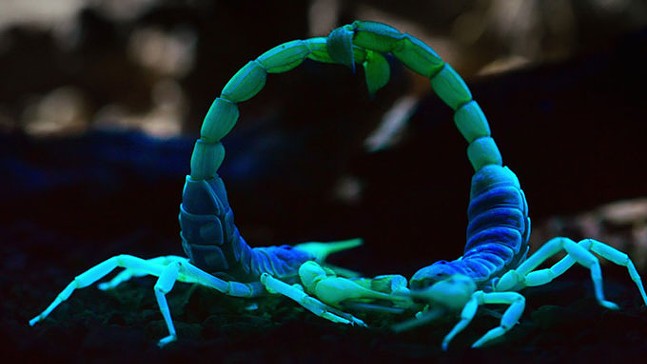The unfortunate part of Netflix’s algorithm is that it flattens its shows together, regardless of quality. It advertises watching Love is Blind next to reruns of The Office, next to yet another true-crime series. Regardless of how much time or effort they took, they all get reduced to “something on Netflix.”
Like most post-Planet Earth nature documentaries, Night on Earth, now streaming, depicts corners and creatures of the planet that humans otherwise would never see in their lifetime. The series focuses almost exclusively on the nighttime habits of animals, from polar bears hunting on the Norwegian island of Svalbard, to seals on the Peruvian coast fending off their vampire bat predators.
The show’s uniqueness comes from its array of heat-detecting cameras and other equipment that can capture animal activity even on a pitch-black savanna plain. The result looks like when a computer screen is inverted, making the colors neon and unfamiliar; a glowing lion chasing a glowing giraffe, a grasshopper mouse chomping on a neon blue scorpion, a light-white elephant wading into the water. It looks and feels alien, which much of it is. Throughout the series, narrator Samira Wiley indicates that certain nighttime animal behaviors have never been captured on camera until now. Cheetahs, for example, were long thought to hunt exclusively in daylight, but Night on Earth captures them hunting at night as well.
Night on Earth is a continuation of the modern nature documentary that once felt like it could change people’s minds about how they treat the Earth or each other, or some other important lesson. Planet Earth and the follow-up 10 years later, Planet Earth II, feature some of the most incredible footage you could ever imagine. But as the definition of TV shifts, streaming platforms have tried to offer every kind of show that was once provided by several different channels on cable TV, including in-depth nature documentaries that take months, if not years, and intense amounts of human labor to make. The filmmakers spend hours in subzero temperatures, hot deserts, and deep oceans just to show us something cool for a few minutes.
Despite its genuinely impressive footage, something about Night on Earth feels slightly hollow, which was also true with other similar nature documentaries. Even though it’s technically a documentary about science, it doesn’t feel like its goal is to teach viewers about how the world works or how the other 99.9% of living beings on the Earth exist. At the end of the episode featuring polar bears, Wiley delivers a quick sentence about the polar bear’s future being uncertain because “weather conditions across the world [are becoming] increasingly erratic,” which is a diluted way of explaining it, considering Antarctica reached 70 degrees in February. Even the way the camera pans away or strategically blocks the scene when one animal kills another animal feels disingenuous to the purpose of the show, equating the sight of a lion eating a wildebeest to human-on-human violence. Music cues like the synth-y score that ramps up the intensity during a chase scene feel like projecting the emotions of an action movie, or the semi-live-action Lion King, onto animals. It made me wish I could watch it with no music at all.
But regardless of the music, or the documentary’s goals, or how it’s distributed, there’s nothing quite like watching a bat suck blood out of a baby seal in the middle of the night.
Night on Earth is now streaming on Netflix.















